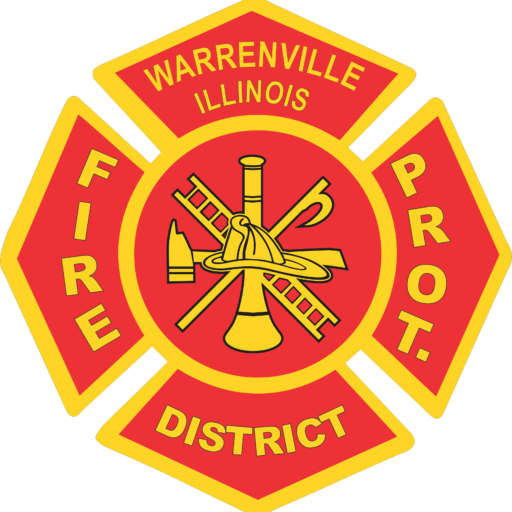How We Rate
The Warrenville Fire Protection District has achieved an Insurance Services Office (ISO) Class 2 rating that could decrease homeowners’ insurance costs beginning July 1, 2018. The Insurance Services Office (ISO) of Commercial Risk Services measures and grades city services on a five-year cycle. ISO is an international company, which insurance companies use when determining homeowners’ insurance rates.
Fire departments are measured on a scale from 1 to 10, with 1 being the highest. The Warrenville Fire Protection District had previously obtained an ISO Class 3 rating in 2012. Warrenville Fire is one of 1,393 fire departments out of 44,672 fire departments across the country to receive an ISO Class 2 rating, which puts the Fire District in the top 3.1 percent of the Nation.

Fire District Trustee President Perkins said the rating reflects the fire districts commitment to both public safety and the local economy. “A community’s investment in fire protection is a proven and reliable predictor of preventing future fire losses and enhancing fire safety delivery to our citizens.” The PPC program is also a tool that helps communities plan for, budget, and justify improvements.
Fire Chief Dennis L. Rogers states the new improved ISO 2 rating “was a team effort which comes from a combination of improvements such as utilizing data analytics in many facets of our job along with being a well disciplined and structured organization of safety professionals making sound decisions while optimizing our reliability and maximize our efficiency and effectiveness.
“In the world today, technology advancements constantly occur, and the explosion of usable data and quality analytics shows us how to provide better service. Both of those factors will assuredly drive an evolution of the fire service and change what it will look like in the next 20 years. From my vantage point, the big challenge will be the ability of the fire service to adapt more quickly, because historically it’s often slow to change. Coupled that with the shift happening in emergency medical services (EMS), and the landscape of how departments are organized and resources deployed may be much different for many departments in the future.”
The District earned additional ISO credit by implementing a community risk reduction program through our fire prevention bureau that considers the specific needs of the community which includes a free smoke alarm program, Knox Box for Senior’s and fire safety educational program for the local school system. In the never-ending, always-changing world of emergency services, data is the key ingredient for a fact based decision-making process.
Chief Rogers commends our firefighters, staff and fire service partners for making our organization a professional and progressive modern day fire department. Additionally, this improved rating helps recruit industry and commercial investment to locate and expand in our community. By all accounts, the fire service is in the midst of a revolution driven by many factors, such as better community risk reduction programs, advances in new technology, changing fire risks, and health concerns of our firefighters.
Assistant Chief Dave Kruzil states that fire departments must adapt to these changes to fulfill their mission of protecting their community. The ability to analyze activities through data is how they learn what works and what doesn’t. Fire departments use record management systems for response reporting, call processing, inventory, training, equipment maintenance, and pre-fire planning.
Members of the fire service are increasingly realizing the benefits of collecting, storing, and providing accurate data—and ISO expects those efforts will increase in the future.
